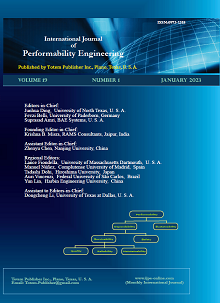-
Machine Learning-Based Breast Cancer Prediction Model
- Kanika Wadhwa, Shreshtha Singh, Arun Sharma, and Swaty Wadhwa
-
2023, 19(1):
55-63.
doi:10.23940/ijpe.23.01.p6.5563
-
 Abstract
Abstract
 PDF (309KB)
PDF (309KB)

-
References |
Related Articles
A wide variety of Application Areas for Machine Learning & Diagnostic Imaging are supported by machine learning. Nevertheless, using this approach carelessly, especially for medical purposes, may result in poor results. As a result, one needs to be conscious of potential hazards and related obstacles in machine learning stages such as pre-processing, training, and testing. This necessitates embedding domain-specific information into to the training process, which would be incredibly vital and plays an important role in many applications. This article introduces a technological solution for using this information in machine developing learning algorithms for biological uses, such as detecting breast cancer. The most prevalent cancer in women worldwide is breast cancer, which also has a high mortality rate. This study's goal is to suggest a method for looking at the use of various machine learning (ML)-based approaches in biomedicine for earlier skin cancer detection and diagnosis. For this purpose, a new prediction model is proposed based on a machine learning technique to achieve the aim of accurate classification of breast cancer. The experiments have been carried out in a Jupyter framework on breast cancer data of WDBC Dataset. These experimented outcomes of tests tell us the proposed prediction model achieved better outcomes by increasing the state-of-the-art machine learning techniques' accuracy, precision, recall, and f-measure. The comparative analysis revealed that the suggested model outperforms other cutting-edge machine learning methods.

